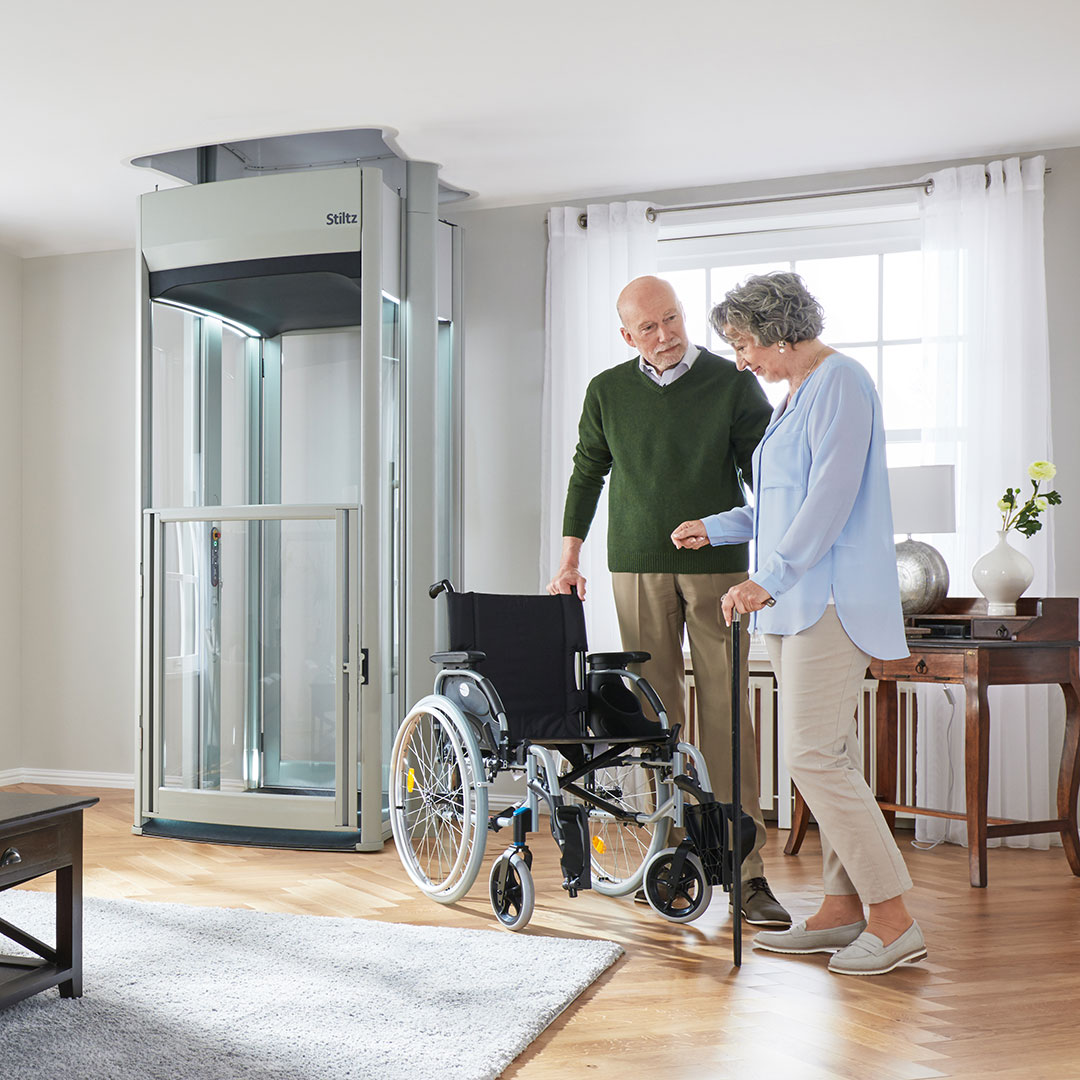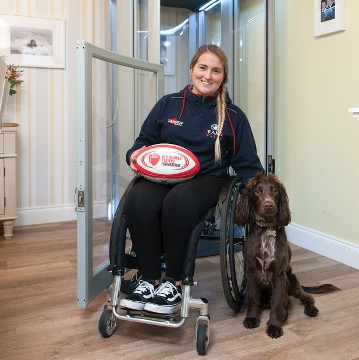As the month of July is suddenly upon us, there is one thing on the minds of most parents; school’s out for summer. Six (or eight for some) weeks of school holidays and children being at home. As a disabled parent, there are many challenges to be faced, both in and outside the home. Our latest Spotlight article looks at how important a sufficiently adapted home is, not only for a person with disabilities but the whole family.
Being a parent with disabilities is in many ways no different from being an able-bodied parent. You have the same parental responsibilities, i.e., to protect your child and to provide a home that is safe. Whether you have always been a disabled parent, have an acquired disability, or your disability is progressive, it does not have to affect your parenting ability. Already faced with the regular tasks of bathing, feeding, changing, sleeping, etc., being a disabled parent can bring additional challenges. One of the biggest of these is the need to have a home that is suitably adapted. This is important not only for the physical movement around the home but for psychological reasons – i.e., to ensure that as a parent you feel in control of your life, can provide the supervision your children need and are able to carry out everyday activities.

Suitably Adapted Housing
Living in a suitably adapted home can have a positive impact on health and wellbeing. It creates an environment that enables a good quality of life, to manage physical health, and to sustain relationships with partners and children. A study carried out by Aspire, a leading spinal injury charity, considered the impact adapted and unadapted homes have on people who had experienced severe back trauma. The study found that there was a significant difference between people who lived in adapted houses compared to unadapted houses, and the impact was both physical and mental. The report says:
“An over overarching reason why an adapted house resulted in the promotion of good quality of life, was due to how much independence, physical movement, opportunities, and dignity each type of house could offer people. The evidence shows that adapted housing enables spinal cord injury (SCI) adults to maintain their independence by providing them with all the adaptations necessary to take care of themselves and their family, to be able to move freely around the home, to pursue leisure and employment opportunities, and to maintain personal dignity”. In contrast, for those who lived in an unadapted house, health and wellbeing was negatively impacted on and, over time, deteriorated substantially.
Stiltz customer Dani Watts tells us, “The first time I went into my home after my accident, there was a huge realisation of what I was faced with and how much I had lost. I had to be carried through the door, I couldn’t even get myself a glass of water and I definitely couldn’t provide a safe environment for my children, Lillie-Rose, 11, and Freddie, 9”.
Quality of Life
Adapted housing is said to provide users with the resources to develop a good quality of life and to not feel a burden on others. As part of a family unit, is it essential that a disabled person feels they are ‘playing their part’ within the household so others in the family didn’t feel they are shouldering the burden for everything in the house, such as household chores, shopping, and looking after a child/children.

Inability to Move Freely Around the Home
Not being able to move around the home freely and safely can mean individuals are unable to access their bedroom or the children’s bedroom, which compromises the ability to put children to bed, a task which many take for granted and which is an extremely important bonding activity; especially when chidren are very young. It may mean living downstairs in one or two rooms or having to wash at the kitchen sink because the first-floor bathroom cannot be accessed.
Mental Health and Wellbeing Impact
Living in a home which is unadapted can not only have a physical impact, but also an impact on mental health and wellbeing. Being unable to carry out simple tasks around the house, especially whilst caring for your children can impact negatively. It can result in chronic depression, loneliness and stress whilst damaging self-esteem and creating a feeling of worthlessness. It can also result in physical pain. Dani explains, “Because I was so upset about not being able to move around my home freely to be able to look after my children, it was causing a huge amount of stress which is the main cause of my chronic pain. I felt like I was trapped in the home and not doing my best for my kids”.
Rehabilitation
Aspire go on to explain why an unadapted home can hinder recovery and rehabilitation: “Living in an unadapted home can affect you if you are in a period of rehabilitation and recovery from a traumatic injury, adding to the stress off adjusting to your new levels of mobility. When living in an unadapted house the physical skills learnt in rehabilitation were often very difficult to either safely or regularly practice. As a result, physical health became a concern, problems arose, and skills lost. All of which not only negatively impacts on the health of the person with SCI and the family, but also the NHS budget”.
Impact on Family Members
Living in an unadapted home can also take its toll on other family members, who may worry and experience overwhelming feeling of responsibility. This can lead to stress, exhaustion and be damaging to their wellbeing. Relationships can be strained by the separation caused by the physical distance of using separate bedrooms.

Home Adaptations
Relevant home adaptions play a fundamental part in ensuring an integral role can be carried out as a parent. Many people find that is isn’t their disability that is the main cause of problems being experienced, but the environment around them. Typically adaptations can include access to and from the property including ramps and lifts, converting a bathroom into a wet room, kitchen adaptations so that meals can be prepared independently. Adaptations are tailored to individual requirements and Occupational Therapists assist with the process. You can also apply for a government grant towards the cost – find out more about Disabled Facilities Grants.
Dani continues, “After a spinal injury there is obviously a period of adjustment and rehabilitation. But compared to moving back home, being in hospital is the easy part. When you get home and out into the real world, it is so much harder. You only become disabled when you are in an environment which is not adapted”
Home Lifts
Moving safely between floors for wheelchair users can be achieved with the installation of a Home Lift. Lifts such as the models available from Stiltz can accommodate two people (Duo+) or a wheelchair (Trio+). These lifts are safe for children as they can be operated by an external remote control if needed. Each Stiltz lift has safety sensors fitted above and below the car which smoothly stop the elevator if an obstruction is detected. The lift is also fitted with a full height light curtain which acts as a sensor and ensures nothing crosses into or out of the car as it travels.
In summary, Dani commented, “To say our Stiltz Homelift has helped me get back to being a Mum is a huge understatement. It has become such an important part of our lives, that we forget it is an adaptation. It has made our house a home not just for me, but for the whole family. As a disabled parent, always remember that it’s not you that is the bad parent, it is your surroundings that is making you feel that way. With the right equipment, there really is light at the end of the tunnel”.
Support Available
Help and support is out there from a number of sources. If you are a disabled parent and need to adapt your home, contact the following organisations
- Disabled Facilities Grant – https://www.gov.uk/disabled-facilities-grants
- RiDC – working towards inclusive and accessible life for all – https://www.ridc.org.uk/
- Enables 2 Parent – https://enabled2parent.org/parents/
- Aspire – spinal injury charity – https://www.aspire.org.uk/
- Back Up Trust – spinal injury charity – https://www.backuptrust.org.uk/


